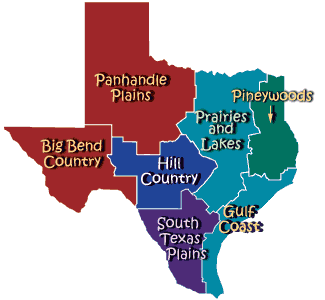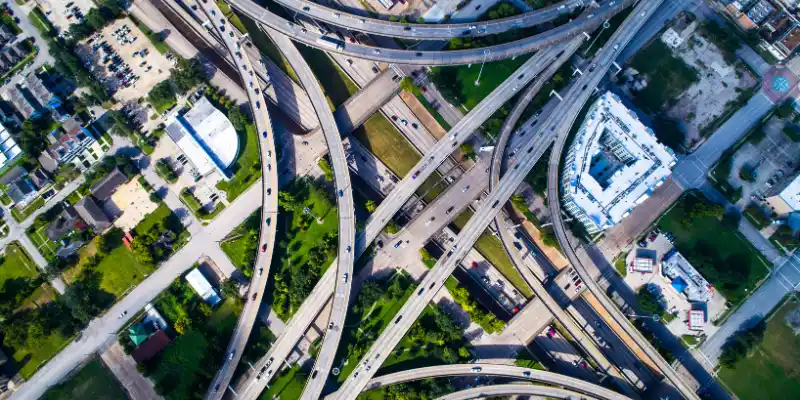As someone who moved to Texas from New England I have some special insight into the pros & cons of moving to Texas. Take a look at our list and let us know what we’re missing!
8 Reasons to Move to Texas
Texas is the top relocation destination in the country for a reason. Here are some of our pros on moving to Texas.
1. Low cost of living.
Texas is affordable, with a cost of living around 7% lower than the national average. That’s based on housing costs being 17% lower, food costs 6% lower, transportation costs 3% lower and goods and services 4% lower.
Utilities are 3% higher than the national average, driven largely by our climate and the need for air conditioning. Fortunately, electricity is deregulated in Texas, so you can keep your electricity bill low by shopping for the cheapest electricity rates. Check this list of deregulated cities in Texas to see if you are considering a move to one of them.

2. Job opportunities.
In 2023, Texas led the nation in job growth, with nearly half a million new jobs created.
Growth industries include data centers, manufacturing, health care, education, restaurants and real estate.
3. No state income tax.
And once you land that job opportunity, you’ll see a bigger net paycheck than in many states. As one of 9 states with no income tax, you’ll keep more money in your pocket.
Instead of income tax, Texas’ tax system mainly focuses on property owners and consumption of certain goods. (More on that in the “cons” section below.)
4. Texans are friendly & welcoming.
When I moved to Texas for school, I was amazed at how warm and friendly the people were. My first weekend I was invited to a barbeque at a stranger’s home. Just from a 10 minute conversation. Hopefully you will find the same!
When you arrive, find your niche. Whether that’s a religious affiliation, neighborhood watch, school groups or a Meet-Up group, opportunities abound to connect to the community.
5. Sunny skies.
Florida may be the Sunshine State, but Texas has 235 sunny days each year. That’s equivalent to an extra month of sunshine compared to most of the US!
Summer time temperatures average 85° but we also have stretches of brutal heat in the 90-100° range. However, winters are mild, averaging 50°.
It takes some getting used to. My first Thanksgiving in Houston, I enjoyed a round of golf while my family in Massachusetts had sleet and snow. But the summer heat definitely had me questioning my sanity!
6. Diversity.
Texas is a diverse state with a culture of Southern hospitality. If your concept of Texas includes the old Westerns, Urban Cowboy or Dallas, you’re in for a surprise.
According to the 2020 Census, Texas is the second most populated state in the USA, with a population of 331.4 million. Our population is 40% Hispanic/Latino, with 40% Non-Hispanic white, Black (12%) and Asian (6%) making up the rest of the population.
7. Outdoor recreation.
Divided into 7 geographic regions, Texas has diverse outdoor recreational opportunities.

- Big Bend Country is your place to go for soaring vistas and desert mountains, plus the oasis created by the Rio Grande river. Hike the Guadalupe Mountains, David Mountains or Chisos Mountains, and visit Big Bend National Park or Big Bend State Park. Only 10% of Texas’ geography is considered desert.
- Panhandle Plains offer gorgeous Palo Duro Canyon and Caprock Canyons State Parks. Palo Duro Canyon is the 2nd largest canyon in the country, after the Grand Canyon in Arizona.
- Hill Country offers rolling hills, grasslands, and clear flowing rivers lined with limestone. A popular hike is Enchanted Rock, a granite dome near Fredericksburg in central Texas.
- South Texas Plains stretches from the Hill Country to the lower Rio Grande Valley.
- Prairies & Lakes is exactly that. Vast spreads of grassland prairie, with rolling and hilly terrain and man-made reservoirs. Major cities in this area include Dallas, Fort Worth and Killeen.
- Pineywoods in East Texas is a woodland wonderland, with thick pine forests and swamps.
- Gulf Coast offers abundant seafood, coastal marshes and major cities, including Houston and Corpus Christi.

8. Great food.
All that adventuring sure works up an appetite. And Texas has some of the best Barbeque and Tex-Mex around. But the diverse culture also means we have amazing Southern, Latin, African and European food. No matter what you’re hungry for, you’ll find it in Texas.
It’s scientifically proven that Chips & Queso from Pappasito’s is good for whatever ails you. (Study data available on request, your results may vary.)

TIP: There are 3 things that are different in Texas than other states. How we handle drivers licenses, car registration and electricity. You can find out more in this article.
4 Negatives When Moving to Texas
There are also some downsides when moving to Texas. Here are 4 of the cons on Texas.
1. Weather: it’s really hot here.
Weather extremes are becoming more normal across the US, and Texas is no exception. We experience the occasional deep freeze during the winter, hurricanes during the summer, and blistering heat.
Summer of 2023 was the second hottest summer on record in Texas.
Hot temperatures mean lots of air conditioning and higher average electricity bills. You’ll want to buy an energy efficient home and shop for the cheapest electricity rates in Texas.
2. Property taxes and sales taxes.
Money to fund infrastructure, services and education has to come from somewhere. With no income taxes, Texas gets its funding from property taxes and sales tax.
Shopping for sugary treats or clothing? You’ll pay sales tax.
Buying your dream home? Prepare to pay for property tax, school tax and possibly taxes for water and sewage.
On a positive note, homeowners can apply for a homestead exemption for their primary residence. This exempts the first $100,000 value of your home from taxes.
3. Limited public transportation.
Moving to Texas? You may need a car.
Public transportation in major Texas cities is limited and largely dependent on busses, unlike the subway or rail systems you’ll find on either US coast.

4. Limited access to affordable healthcare.
Texas has some of the largest major medical centers in the country. But can you afford health insurance?
Texas has the highest rate of uninsured residents in the country (18.4% or roughly 5.4 million people). The Texas state legislature has voted not to accept federal funding that would expand Medicaid.
Also, according to statistical data from the Commonwealth Fund from 2023, Texas is ranked 48th in the country for healthcare access and affordability.
